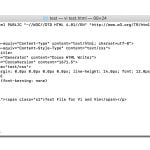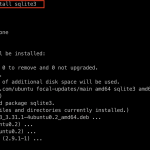Linux is derived from UNIX and they are a lot of Linux distributions in the market, which can be accessed by many users continuously. Most of the servers provider recommend the Linux operating system by using this you have some security problems for files and folder permission. So Linux providing various kind of file permission that accessed by user or group. For effective security Linux providing two authorization levels.
1. Ownership
2. Permission
If you like to generate permission quickly, Here you have Chmod Unix Permissions Calculator. Using this you can generate your Octal or Symbolic value.
Unix/Linux Ownership
For your file and folder on Unix/Linux system, they are 3 types of ownership there, the types are listed below.
User
The person who created file or folder they become its owner. So some times the user also called as owner.
Group
In the User Group, you have multiple users in the group. All the users having the same permission for every folder and file. If you have a project file that files need to access means you can assign read and write permission for the entire group. This permission only access by group members and no one else can modify the file or folder.
Other
Other, all can access the file. The file may be created by you or you belong to a User Group who have access to give the file and folder.
Unix/Linux Permissions
In your file and folder in Unix/Linux, you have the following 3 permission.
Read
This read permission gives the authority to open and read the files.
Write
Using write permission you have access to edit or modify the contents of the file.
Execute
Using Windows operating system it is easy to run “.exe” extension but in Unix/Linux you can’t run a program unless the execute permission is set.
Below the characters are very easy to remember.
Read Permission r
Write Permission w
Execute Permission x
No Permission -
Changing File or Folder permissions with ‘chmod’ command
Change mode is shortly known as chmod you can change the permissions like (read, write, execute) on your file or folder for the owner and group. Based on the following syntax you change the file permission.
chmod permissions filename
Below you can see all the permission types
| Number | Symbol | Permission Type |
|---|---|---|
| 0 | --- | No Permission |
| 1 | --x | Execute |
| 2 | -w- | Write |
| 3 | -wx | Execute + Write |
| 4 | r-- | Read |
| 5 | r-x | Read + Execute |
| 6 | rw- | Read +Write |
| 7 | rwx | Read + Write +Execute |
Below you can see the chmod command examples
Owner can read and write
chmod 600 filename
Owner can read, write and execute
chmod 700 filename
Everyone can read and write
chmod 666 filename
Everyone can read, write and execute
chmod 777 filename
The post Chmod File Permissions in Linux/Unix appeared first on Linux, Angular, Angular JS, jQuery, PHP, MySQL and Web Development Tutorials.



